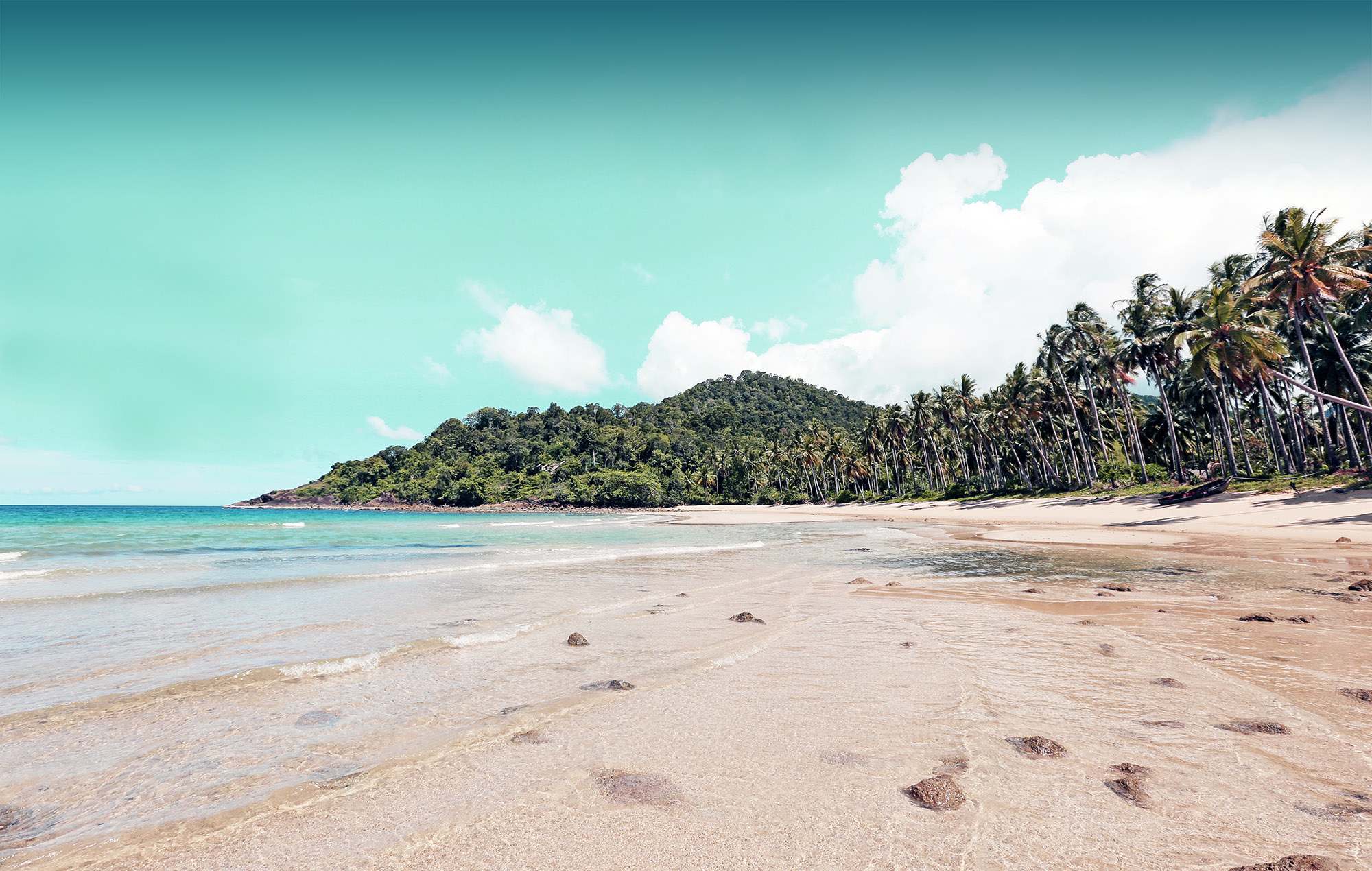* International arrival numbers are from 2016. The “Most popular among” category represents annual arrivals to Bali by country divided by that country’s total population. As such we get an understanding of where Bali is most popular per capita. Only countries falling within the top 30 total arrivals are considered here.
Bali Weather – When to Go
Bali has two main seasons, a wet season and a dry season. The wet season usually falls in the months of October through April, while the dry season occurs between May until September. The most popular season for travel and beach holidays in Indonesia is the dry season. Even though the wet season sees more rain, the downpour will most often be delivered by intense tropical showers lasting only a couple of hours a day. The temperature fluctuates around 27 ºC (81 ºF) all year round.
Bali, Lombok, Gili Islands, and other surrounding islands can be visited all year, although rural travel may be affected by muddy roads during the rainy season. As you can see in our Bali infographic, the sweet spot for traveling to the area falls during April to June. During this time the weather is good and you have good chances of finding a good hotel deal in Bali, Lombok, or Gili.
Bali Annual Weather Chart
Please note that the weather chart shows the average temperature of a 24 hour span. Temperatures can be expected to be slightly higher during daytime and lower during the night. This Bali weather chart also applies to Lombok, Gili Islands, and other islands in the area.
Bali – Surfing, Yoga, and Hedonism
<strong>Overview</strong>
“Selamat datang”, welcome to our Bali and surrounding islands page. Bali is among the absolut top beach holiday destinations in the world. The island has so much to offer, and part of the lure is that it is all within fairly easy reach once you set foot on the island. As a tourism destination Bali is mature. All the facilities, activities, and infrastructure is in place, making it an easy area to travel in and around. Travel connections are good with plenty of airlines connecting to Denpasar, Bali’s international airport, and the transportation within Bali and between Lombok and the Gili Islands is well-organized.
Ubud is Bali’s cultural capital, where you will find quirky cafes, art shops, creative hubs for designers and digital nomads, and stunning resorts among the rice fields that surround the city. In Bali, you will encounter the spiritualism and cultural vigilance of the local residents, and there is no shortage of picturesque temples and mythical figures.
Among top activities, Bali offers great surfing, tranquil yoga retreats, diverse diving, volcano hiking, rave parties, and temple experiences. The only drawback is perhaps that whatever made you come to Bali, probably also convinced thousands of other visitors to join the fun. You have to make an effort if you want to step out of the tourism mill, but it is possible with a little adventurousness. Remember, if you can’t find your Robinson Crusoe beach in Bali, Indonesia has about 17,000 other islands to choose from.
<strong>Bali Area Beaches</strong>
The coasts of Bali and the surrounding islands are a mix of steep cliffs and sandy beaches. You won’t find many postcard perfect beaches, but there are numerous high quality ones. The sand colour is most often light brown or gray, while you can also find many volcanic black sand beaches. The most popular beaches in the region are situated in the south of Bali. Most of the beaches here are filled to the brink with visitors, hotels, and tourist facilities. The most famous beach in the Bali region is Kuta Beach, a hedonistic paradise for surfers, party lovers, and international vibe seekers. Head north, east, or west if you want more space for your beach yoga session.
While Lombok and the Gili Islands used to be an exotic escape from the busy beaches of Bali, these islands have risen in popularity, and can be easily reached. As is often the case in Southeast Asia, the beaches in the Bali region tend to cater to different segments, so make sure you research the options before you select your beach accommodation.
<strong>Balinese Food</strong>
Since Bali has been a holiday magnet for decades, you can find almost any type of cuisine from around the world. Additionally, the beauty of Bali and the thriving hospitality industry has attracted world-class chefs to the area, so your options of fine dining are unsurpassed. You will find classy restaurants in stunning settings costing a fraction of the price elsewhere.
Most of the local restaurants are Chinese or Indonesian restaurants serving well-known national dishes such as Padang food, nasi goreng, redang beef, satay, and fried rice. Local to Bali is the serving of pork in their meals, due to the predominantly Hindu population. The local dishes are mostly accompanied with rice or noodles.
<strong>Accommodation</strong>
Bali has everything from a hostel bunkbed to exclusive beach retreats. But it has more than that. For the conscious minded travelers, Bali has some of the leading sustainable hotels in the world backed by a committed community of sustainable tourism entusiasts. Bali has yoga retreats and detox resorts where you can restore your body and mind. And above all, no place in the world has a concentration of well-designed, beautifully decorated, and peace-of-mind inducing boutique accommodations as does Bali.
The world leader of tropical holidays, Bali and the surrounding islands give you the highest quality of dining options, boutique hotels, and thriving culture! If there ever was a one-stop shop for beach aficionados, the Bali region in Indonesia is it.
Share with family, friends, and the world:




